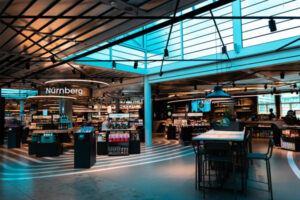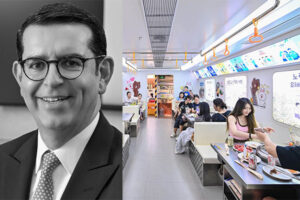By Gregory Fonseca
The concepts behind contemporary placemaking originated in the 1960s, when journalist Jane Jacobs offered groundbreaking ideas about designing cities that catered to people, not just to cars and shopping centers. Her work focused on the importance of lively neighborhoods and inviting public spaces. Jacobs advocated citizen ownership of streets through the now-famous idea of “eyes on the street”. She emphasized essential elements for the creation of social life in public spaces.
Public space and placemaking have become somewhat of a benchmark for critical thinking in relation to philosophy, (urban) geography, visual art, cultural studies, social studies, and urban design. The term “public space” is also often misconstrued to mean other things, such as “gathering place”, which is one component of the larger idea of social space.
Danish architect Jan Gehl said, “First life, then spaces, then buildings – the other way around never works. In a society that is becoming steadily more privatized with private homes, cars, computers, offices, and shopping centers, the public component of our lives is disappearing. It is more and more important to make cities inviting, so we can meet our fellow citizens face to face and experience things directly through our senses. Public life in good quality public spaces is an important part of a democratic life and a full life.” I would expand his ideology even further: “First life, then spaces, then buildings – and then public spaces within buildings.” Stipulating that public spaces within buildings also provide for integration and permeability with the surroundings encourages vital social interaction.
An essential component of placemaking is soliciting the input of those who will be using and/or occupying the intended space. This is important because end-users are likely to have useful insights into how the space functions, or should function, as well as a having a historical perspective of the area. Understanding what does and does not matter to users is essential to achieving success in developing the desired social interaction.
As society changes to accommodate innovation in technologies, urban planners and stakeholders alike are attempting to utilize those technologies to facilitate or encourage physical change. One innovation that has had a massive impact on us is digital technologies, in particular, social media. Urban decision makers are increasingly attempting to plan cities based on feedback gathered from community engagement to ensure the development of long-lasting, livable places. With the innovation of niche social technologies (people and businesses sharing the latest information to build communities at the neighborhood level), communities have focused their engagement away from local-government-led forums and platforms to social media groups on websites like Facebook and Nextdoor to voice concerns, critiques, and desires. In a sense, this new platform has become a “Third Place,” a term invented by sociologist Ray Oldenburg, where people spend their time in addition to home (First Place) and work (Second Place).
Social media tools have influenced the future of placemaking in that they are being used to reclaim, reinvigorate, and reactivate spaces in the context of urban areas and public spaces in buildings. Online neighborhood and event-centric groups and forums have provided suitable non-physical spaces for public discussion – sometimes referred to as urban acupuncture. These types of small interventions have the ability to perpetuate change or “relieve stress” on an urban scale.
Placemaking should, therefore, be a people-centered approach to the planning, design, and management of public spaces in both an urban context as well as public spaces within buildings. As previously mentioned, placemaking should involve looking at, listening to, and understanding the people who live, work, and/or play in a particular space in order to fully comprehend needs and aspirations. Information gathered can then be used to create a common vision for each place, not some pre-conceived notion about a certain place. When applied, this thought process can evolve into an execution strategy that can immediately bring social benefits to public spaces and the people who use and occupy them. Placemaking is about building sustainable and creative places, strengthening communities, and including diversity.






